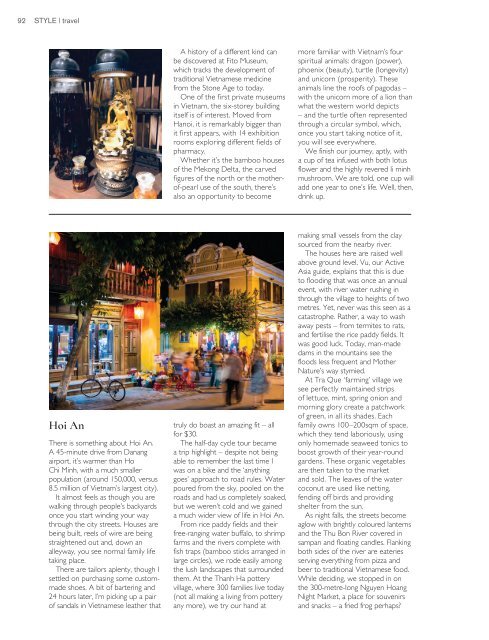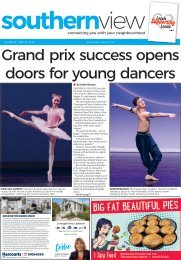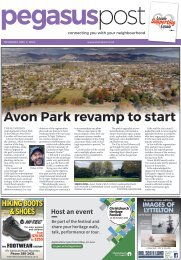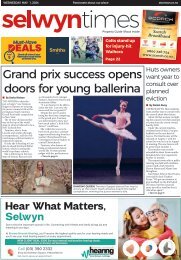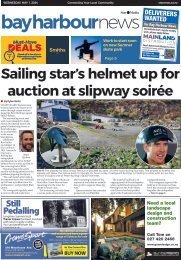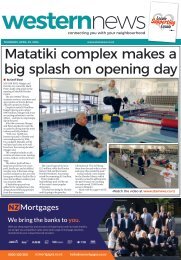Style: August 02, 2019
Create successful ePaper yourself
Turn your PDF publications into a flip-book with our unique Google optimized e-Paper software.
92 STYLE | travel<br />
A history of a different kind can<br />
be discovered at Fito Museum,<br />
which tracks the development of<br />
traditional Vietnamese medicine<br />
from the Stone Age to today.<br />
One of the first private museums<br />
in Vietnam, the six-storey building<br />
itself is of interest. Moved from<br />
Hanoi, it is remarkably bigger than<br />
it first appears, with 14 exhibition<br />
rooms exploring different fields of<br />
pharmacy.<br />
Whether it’s the bamboo houses<br />
of the Mekong Delta, the carved<br />
figures of the north or the motherof-pearl<br />
use of the south, there’s<br />
also an opportunity to become<br />
more familiar with Vietnam’s four<br />
spiritual animals: dragon (power),<br />
phoenix (beauty), turtle (longevity)<br />
and unicorn (prosperity). These<br />
animals line the roofs of pagodas –<br />
with the unicorn more of a lion than<br />
what the western world depicts<br />
– and the turtle often represented<br />
through a circular symbol, which,<br />
once you start taking notice of it,<br />
you will see everywhere.<br />
We finish our journey, aptly, with<br />
a cup of tea infused with both lotus<br />
flower and the highly revered li minh<br />
mushroom. We are told, one cup will<br />
add one year to one’s life. Well, then,<br />
drink up.<br />
Hoi An<br />
There is something about Hoi An.<br />
A 45-minute drive from Danang<br />
airport, it’s warmer than Ho<br />
Chi Minh, with a much smaller<br />
population (around 150,000, versus<br />
8.5 million of Vietnam’s largest city).<br />
It almost feels as though you are<br />
walking through people’s backyards<br />
once you start winding your way<br />
through the city streets. Houses are<br />
being built, reels of wire are being<br />
straightened out and, down an<br />
alleyway, you see normal family life<br />
taking place.<br />
There are tailors aplenty, though I<br />
settled on purchasing some custommade<br />
shoes. A bit of bartering and<br />
24 hours later, I’m picking up a pair<br />
of sandals in Vietnamese leather that<br />
truly do boast an amazing fit – all<br />
for $30.<br />
The half-day cycle tour became<br />
a trip highlight – despite not being<br />
able to remember the last time I<br />
was on a bike and the ‘anything<br />
goes’ approach to road rules. Water<br />
poured from the sky, pooled on the<br />
roads and had us completely soaked,<br />
but we weren’t cold and we gained<br />
a much wider view of life in Hoi An.<br />
From rice paddy fields and their<br />
free-ranging water buffalo, to shrimp<br />
farms and the rivers complete with<br />
fish traps (bamboo sticks arranged in<br />
large circles), we rode easily among<br />
the lush landscapes that surrounded<br />
them. At the Thanh Ha pottery<br />
village, where 300 families live today<br />
(not all making a living from pottery<br />
any more), we try our hand at<br />
making small vessels from the clay<br />
sourced from the nearby river.<br />
The houses here are raised well<br />
above ground level. Vu, our Active<br />
Asia guide, explains that this is due<br />
to flooding that was once an annual<br />
event, with river water rushing in<br />
through the village to heights of two<br />
metres. Yet, never was this seen as a<br />
catastrophe. Rather, a way to wash<br />
away pests – from termites to rats,<br />
and fertilise the rice paddy fields. It<br />
was good luck. Today, man-made<br />
dams in the mountains see the<br />
floods less frequent and Mother<br />
Nature’s way stymied.<br />
At Tra Que ‘farming’ village we<br />
see perfectly maintained strips<br />
of lettuce, mint, spring onion and<br />
morning glory create a patchwork<br />
of green, in all its shades. Each<br />
family owns 100–200sqm of space,<br />
which they tend laboriously, using<br />
only homemade seaweed tonics to<br />
boost growth of their year-round<br />
gardens. These organic vegetables<br />
are then taken to the market<br />
and sold. The leaves of the water<br />
coconut are used like netting,<br />
fending off birds and providing<br />
shelter from the sun.<br />
As night falls, the streets become<br />
aglow with brightly coloured lanterns<br />
and the Thu Bon River covered in<br />
sampan and floating candles. Flanking<br />
both sides of the river are eateries<br />
serving everything from pizza and<br />
beer to traditional Vietnamese food.<br />
While deciding, we stopped in on<br />
the 300-metre-long Nguyen Hoang<br />
Night Market, a place for souvenirs<br />
and snacks – a fried frog perhaps?


